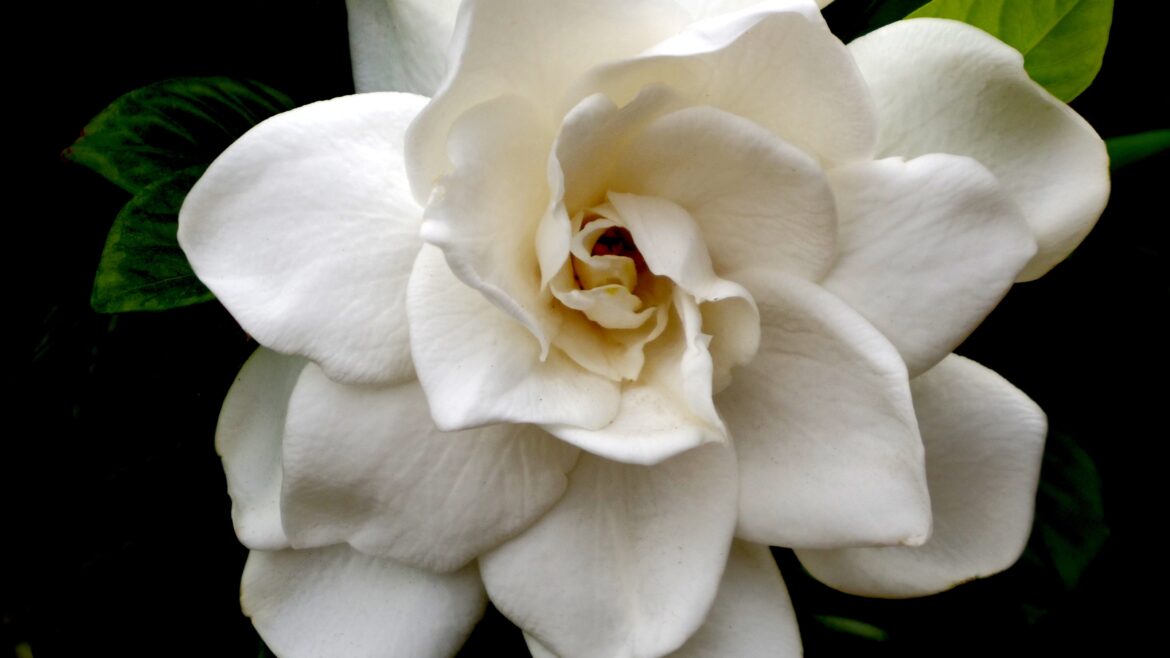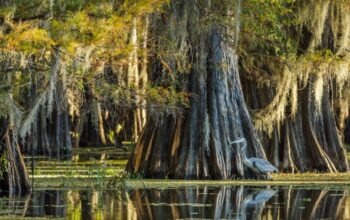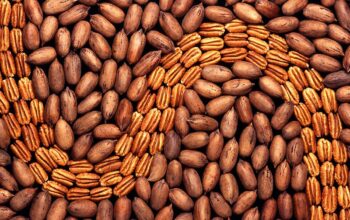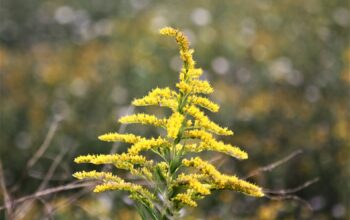
The gardenia is a common and adored feature in southern landscapes, making this non-native plant one of LSU’s Southern heritage plants. Its love for acidic soil and humid, sub-tropical regions makes the gardenia an excellent choice for most Covington properties, especially along the river. Best known for its showy, incredibly fragrant flowers, there are many varieties that adapt readily to our environment.

Gardenias are flowering plants in the family Rubiaceae, also known as the coffee family. The gardenia genus consists of approximately 140 species native to the tropical and sub-tropical climates of Africa, Asia, Madagascar and the Pacific Islands.
An evergreen with rich, dark glossy leaves, the gardenia is grown for its beautiful foliage as well as its flowers. Leaves are opposite or in whorls of three or four, eventually opening into a singular or small cluster of blooms mid-spring through mid-summer.
Gardenia flowers have a tubular-based corolla with 5–12 lobe-petals, ranging from 2 to 4.7 inches in diameter. Most varieties have highly fragrant white blooms, some with variations of light yellow. In contrast to its hardy leaves, gardenia flowers tend to be very delicate and will brown quickly in heavy rain. Most plants prefer bright, indirect light.

Some Quick Fun Facts About Gardenias:
In eastern Asia the gardenia fruit is used as a yellow dye for fabric and food; in traditional Chinese medicine it is used for its clearing, calming, and cooling properties.
In France, gardenias are the flower traditionally worn by men as boutonnière.

The genus was named by Carl Linnaeus and John Ellis after Dr. Alexander Garden (1730–1791), a Scottish-born American botanist, zoologist and physician of Charleston, South Carolina.
Sigmund Freud remarked to the poet H.D. that gardenias were his favorite flower.
Gardenia flowers are associated with purity, clarity, and love. In some cultures the gift of gardenias signifies secret or untold love. It is revered in most all cultures as a symbol of beauty and loveliness.





